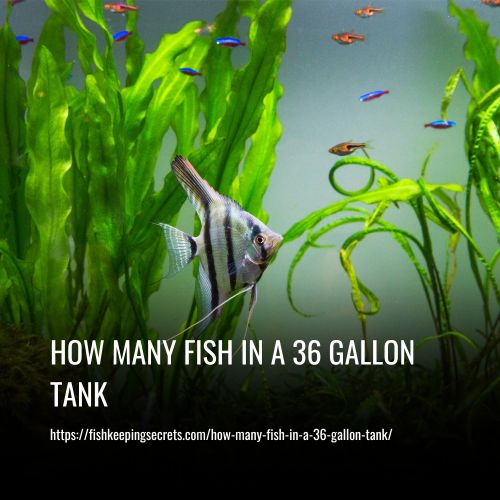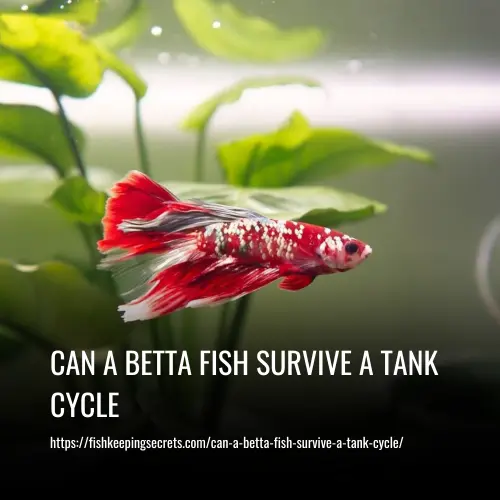A cloudy fish tank isn’t a symptom of something serious, but it could be a sign that there are problems with your water quality or the chemistry of the tank. Cloudiness usually occurs when ammonia builds up from too much waste or when agitation causes tiny particles in the water suspension.
Some of the reasons for the Betta fish tank being cloudy are:
- Non-Cycled Tank.
- Disturbed Substrate.
- Incorrect Filter Cleaning.
- Too Much Water Change.
- Overfeeding.

Reasons for Cloudy Betta Aquarium Water
Cloudy betta aquarium water can be caused by a variety of factors, including overfeeding, poor maintenance of the tank, and an imbalance in water chemistry. Overfeeding can lead to excess waste and uneaten food that will cloud the water. Poor maintenance, such as not performing regular water changes or not cleaning the tank frequently enough, can also cause cloudy water.
1. Non-Cycled Tank:
A tank cycle is an essential step when setting up a new aquarium. The process includes incorporating a substrate, decorations, plants, and a water neutralizer into the tank.
During this time, it is not uncommon for the water to become cloudy as beneficial bacteria begin to grow in the filter area of the tank.
While this may be alarming for some aquarium owners, it is a normal part of the cycle and should clear up without any intervention after about four to six weeks. Ultimately, having healthy bacteria in your tank is essential for maintaining proper water balance and clarity.
2. Disturbed Substrate:
It is important to keep the substrate in your fish tank clean and free of debris for optimal water quality. When the substrate becomes disturbed, such as when it is vacuumed or moved, built-up sediments get released into the upper parts of the tank and can cause cloudy water. Vacuuming the substrate on a regular basis, once per week, is an effective way to keep the debris from accumulating in your aquarium.
Fish waste, uneaten food, and other materials that accumulate on the substrate should be quickly removed before they are able to introduce dirt and pollutants into the tank water. Keeping a clean aquarium is essential for maintaining healthy fish and crystal-clear water!
3. Incorrect Filter Cleaning:
When cleaning your fish tank filter, it is important to avoid using tap water or soap. This can kill beneficial bacteria and lead to cloudy water in the aquarium. Instead, rinse the filter with aquarium water and make sure it does not stay out of the water for more than two or three minutes. This will ensure that the beneficial bacteria in your tank remain alive and well so that they can keep your aquarium clean and healthy.
4. Too Much Water Change:
It’s important to ensure that the water parameters in your betta’s tank remain balanced in order to keep them healthy and vibrant. Generally, it is recommended to do weekly partial water changes of 10-20% of the total volume. Replacing too little water may not be effective at cleaning the tank while replacing too much water or making frequent large changes can cause the fish to become overly stressed.
Cloudy water is a clear sign that something is wrong, so if this occurs then you may need to adjust your maintenance routine accordingly. Providing ideal environmental conditions will keep your fish happy and their colors will stay vibrant as a result.
5. Overfeeding:
It is important to remember that while Bettas may seem like they will eat any food that is offered, overfeeding can have serious consequences. Eating too much can lead to constipation or obesity, as well as dirty and cloudy tank water due to decaying food residues. This can raise the ammonia levels in the water, resulting in stress and potentially even ammonia poisoning and death.
In order to avoid these problems, it is best to stick with the recommended amounts of food. Regular tank cleaning and a proper filter with helpful bacteria are also essential for keeping your Betta healthy.
What Are The Symptoms Of Cloudy Water In A Betta Tank
Cloudy water in an aquarium can be a sign of various issues. To identify the cause and treat the problem accordingly, it’s important to know the different types of cloudy water and their associated symptoms.
White or grey, misty-looking water, where it is difficult to see inside the tank, may indicate that there is too much organic waste present in the tank as a result of overfeeding or decaying organic matter.
On the other hand, green cloudy water usually indicates algae bloom due to excess nitrogen being released into the tank from fish waste.
1. Appearing And Disappearing Rapidly:
Cloudy betta tank water is usually caused by an excess of bacteria or waste in the aquarium. This can be due to overfeeding, uneaten food, and too many fish in the tank. It can also be due to poor maintenance of the tank, such as not cleaning it frequently enough or not keeping up with regular water changes.
If you suspect any of these reasons, do a partial water change and thoroughly clean your tank to improve the quality of your betta’s home. Additionally, make sure to only feed an appropriate amount of food for the size and number of fish in your tank – too much will cause a buildup of waste that will cloud the water.
2. Different Colors:
White/Gray Cloudy Water:
This type of cloudy water is usually caused by excess waste, debris, or uneaten food. It might also be caused by too much oxygen in the tank due to over-aeration. To fix this, do a full water change and ensure the filter is working properly. You can also add a few live plants to the tank, which will help absorb the extra oxygen and make your water less cloudy.
Green Cloudy Water:
Green cloudy water is almost always a sign of something being wrong with the water chemistry in your tank. It could be caused by an imbalance in ammonia levels or pH levels, as well as nitrate or phosphate buildup. To fix this, test your water for any abnormalities. If you find anything out of balance, adjust it accordingly and do frequent partial water changes until it returns to normal. Additionally, make sure you’re not overfeeding and that your aquarium has enough filtration because green foggy water can be an indication there are too many nutrients in the tank.
3. Different Levels Of Visibility:
As an aquarium enthusiast, you should also be aware of the visibility levels in your tank. When it is clean, the water will remain crystal clear and you will be able to see through it easily. However, when your water becomes cloudy or murky, this is a sign of possible poor water quality due to a build-up of bacteria, algae, or other particles.
Depending on how high the concentration of particles is, visibility can range from a faint haze that is still easy to see through to complete opacity. If you find yourself worrying about the visibility level, take immediate action and perform a thorough cleaning of the tank–this should help restore the clarity of your tank’s water and give you clarity regarding any potential issues with water quality.
Do Live Plants Help with Cloudy Water?
Live aquatic plants can bring a variety of benefits to your aquarium. They act as natural purifiers, improving water conditions by providing a home for beneficial bacteria colonies that break down ammonia, nitrites, and nitrates from fish waste and food leftovers. Additionally, live plants help control unwanted algae growth, keeping your tank clear and nutrient-rich.
Finally, aquatic plants consume carbon dioxide from the water while producing fresh oxygen during photosynthesis, giving your Betta fish increased activity levels and energy. Furthermore, Bettas are known to love playing among and resting on live plants such as Marimo moss balls for added stimulation.
Therefore, introducing live aquatic plants into your aquarium could be an ideal way to improve water quality while providing entertainment for your fish.
Is Cloudy Water Bad for Betta Fish, and Can it Be Lethal?
In addition to faded colors, cloudy water may be another sign that your fish are not happy. Cloudy water can be caused by disturbed sediment, suspended particulates, or high levels of ammonia and nitrite. Disturbed sediment may cause physical harm to your fish, as the sand particles can be sharp and damaging to gills. Suspended particulates could choke your fish if they become too dense.
Additionally, high amounts of ammonia and nitrite can quickly make the water toxic, so it is essential to take steps to remove them. Providing an appropriate environment with a balanced diet, a good filtration system, and frequent water testing will help keep your fish healthy and their environment clear.
How Often Do You Clean a Betta Bowl?
It is important to properly maintain your aquarium in order to ensure the health and safety of your fish. The normal rule of thumb for cleaning aquariums is changing 20-30% of the water per week, although this can vary depending on the type of fish, the size of the tank, and the presence or absence of a filter. For instance, if you have a 20-gallon tank with one betta fish, you may be able to get away with 5-10% changes each week.
Additionally, keeping an eye on your nitrate levels can also help decide how much water needs to be changed. It is best to keep nitrates at or below 20 ppm and if they reach that level by the end of the week, you should do a change of at least 50% water. Keep in mind that without a filter, ammonia and nitrite can become toxic in as little as a few hours and daily water changes may be necessary in these cases.
Finally, it is worth considering whether investing in an aquarium with a filter would make sense for your pet. This could save you time and energy since all maintenance would be done automatically by the filter. Overall, understanding when and how much water needs to be changed is essential for keeping happy and healthy fish!
How to Fix Cloudy Water
Cloudy water in an aquarium can be caused by several factors, such as improper substrate washing and high levels of ammonia and nitrite. While there are products that can help with cloudiness, it is important to address the underlying issue in order to maintain a healthy tank.
Installing a filter is a good first step, as it will quickly remove any high levels of ammonia and nitrite. Water changes are also important, but should be done gently to avoid further disturbance to the substrate.
Additionally, adding a bacterial booster like Tetra Safe Start Plus can also help clear up cloudy water, though this method may not provide long-term results without installing a filter and established media. If you’re dealing with cloudy water in your tank, make sure to take these steps for long-lasting results and healthy fish.
FAQs
Cloudiness in a betta fish tank is typically caused by a bacterial bloom, excess food, or overfeeding. These factors lead to an imbalance in the tank’s ecosystem, resulting in cloudiness.
To remedy a cloudy tank, start by performing a partial water change, replacing around 25% of the water with clean, dechlorinated water. Ensure that you are not overfeeding your betta and clean any uneaten food promptly. Additionally, consider improving filtration and increasing water circulation to prevent future cloudiness.
Yes, poor water quality, such as high ammonia or nitrite levels, can contribute to cloudy tank water. Regular water testing and maintenance are essential to ensure optimal water conditions for your betta fish.
Yes, overfeeding can lead to excess organic matter in the tank, which provides a breeding ground for bacteria and algae. This, in turn, can cause the water to become cloudy. Feed your betta fish sparingly and remove any uneaten food to prevent cloudiness.
Tap water may contain impurities and chemicals that can lead to cloudiness in a betta fish tank. It’s crucial to dechlorinate tap water before adding it to the tank to remove harmful substances that can affect water quality and clarity.
Yes, adding live plants to the tank can help improve water quality by absorbing excess nutrients and providing oxygen. Additionally, regularly cleaning the tank’s substrate and decorations can help reduce organic buildup and maintain water clarity.
Conclusion:
No matter what the cause of your cloudy betta fish tank is, it is important to remember that this can be a sign of ill health and needs to be addressed. Resolving water clarity issues usually isn’t too difficult, but it will require regular testing and maintenance of your aquarium setup.
If you take the time to identify the most likely cause, follow the appropriate steps to correct it, and provide your betta with the perfect home, you should soon have crystal-clear water again.



